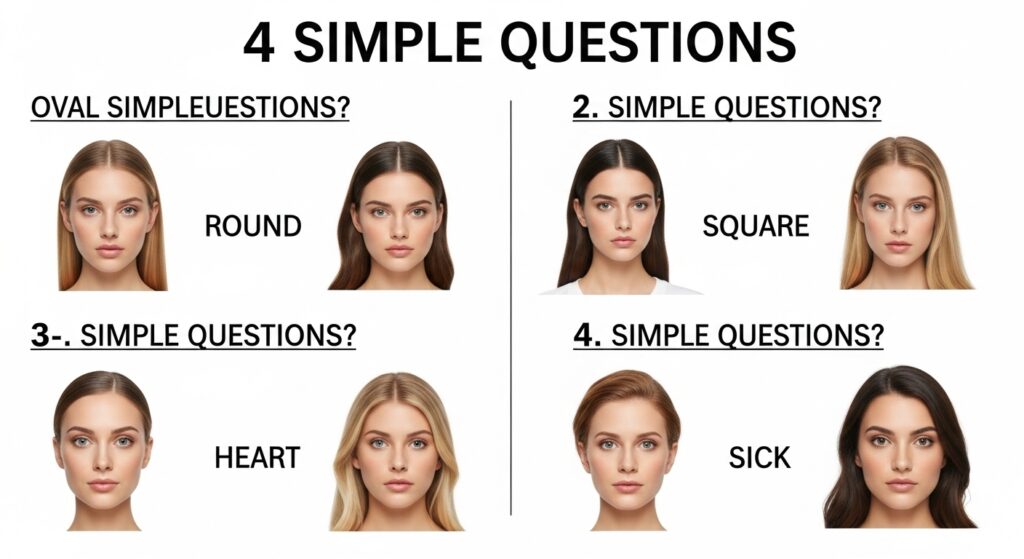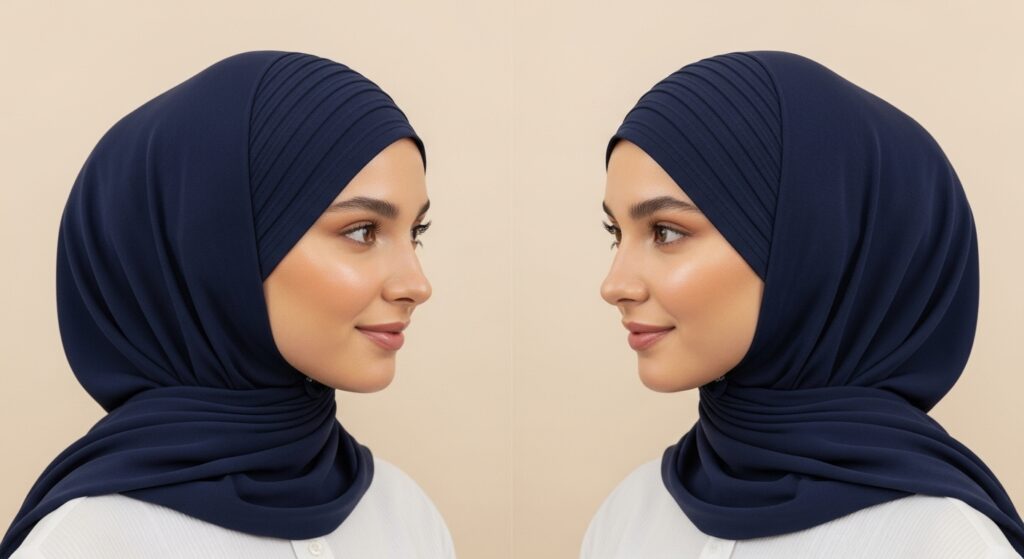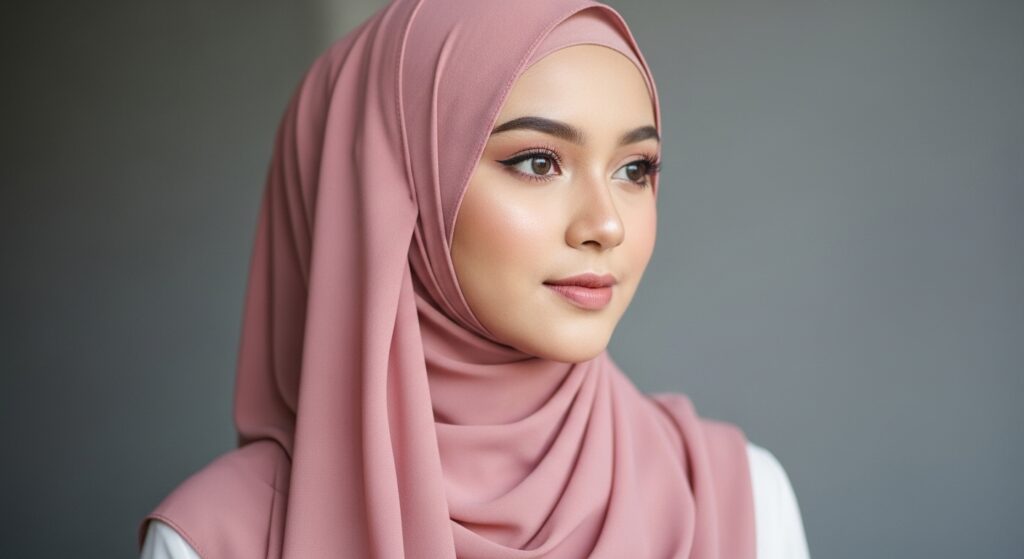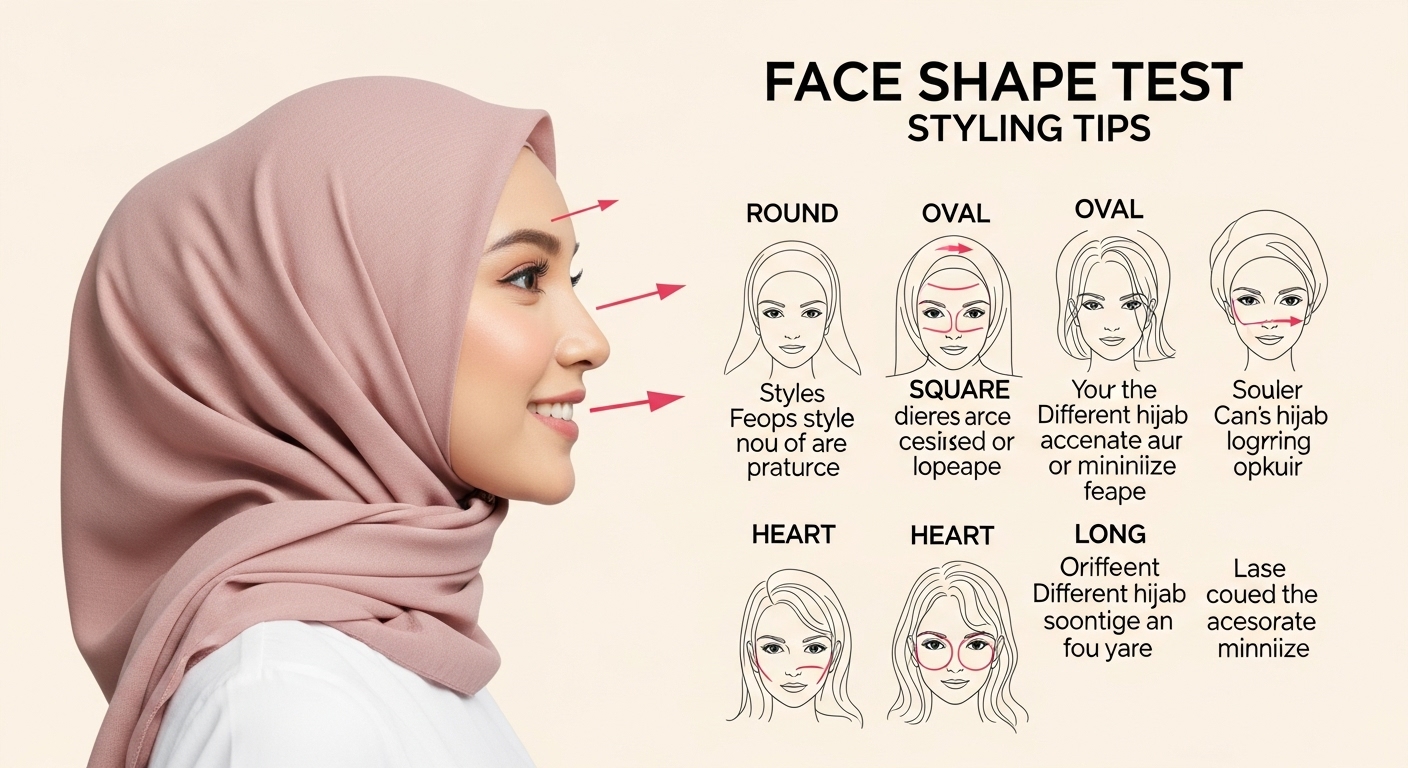Finding the perfect hijab style starts with understanding your unique face structure.Many women struggle with hijab draping because they don’t know their facial geometry.
This simple guide will help you determine facial structure and choose the most flattering headscarf styling techniques.
Knowing your face shape transforms how you approach modest fashion.The right hijab wrapping technique can enhance your natural beauty and boost your confidence.
This facial shape identification process takes just a few minutes but makes a lifetime difference.
How to Take a Face Shape Test for Hijab – Step by Step Guide?
Before you can analyze face outline, you need proper preparation.Pull all your hair back completely. Remove any head covering or accessories.
Stand in front of a well-lit mirror or take a front-facing photo.Look straight ahead and focus on your facial contour.Don’t tilt your head or angle it sideways.
The goal is to see your complete face silhouette clearly.Pay attention to your forehead proportions, cheekbone width, and jawline shape.
Measure facial proportions by observing the overall length versus width.Notice which part of your face appears widest.Check if your chin shape is pointed, rounded, or square.
These details help with accurate face form detection.Take your time during this facial blueprint analysis.Rushing through the process leads to incorrect results.Good lighting and honest observation are key to successful facial pattern recognition.
READ THIS BLOG : Sustainable Vacation Outfits for Women – Summer 2025
4 Simple Questions to Determine Your Face Shape
The first question focuses on face length.Does your face appear longer than it is wide.Or does it look approximately equal in length and width?
This helps calculate face ratio accurately.Next, assess face dimensions by examining overall width.Is your face narrow, average, or wide compared to typical proportions.

This measurement is crucial for head shape analysis.The third question identifies your widest facial area.Evaluate facial features to determine if your forehead, cheekbones, or jawline is most prominent.
This step is essential for proper facial contour mapping.Finally, examine your chin shape carefully.Is it pointed like a triangle, rounded like a circle, or square and flat?This detail completes your face mapping process and ensures accurate results.
Oval Face Shape – Best Hijab Styles and Draping Tips
Oval faces have balanced facial architecture with gentle curves.Your face pattern is naturally proportioned, making most hijab styles flattering.
The forehead is slightly wider than the chin, creating harmonious facial symmetry.Try loose hijab draping that frames your face softly.Avoid tight wrapping around the cheeks.
Let some fabric flow naturally around your face outline.This enhances your already balanced facial geometry.Hijab fabric choices are flexible for oval faces.
Both structured and flowing materials work well.Experiment with different hijab colors and textures.Most hijab accessories complement your natural face structure.Consider side-swept draping or asymmetrical hijab wrapping.
These styles add visual interest without disrupting your balanced proportions.Your oval face silhouette can handle various creative hijab tutorial techniques.
Round Face Shape – Perfect Hijab Wrapping Techniques
Round faces have soft curves with similar width and length measurements. Your cheekbone width closely matches your forehead and jaw measurements. The goal is adding length while maintaining your natural softness.
Create height with voluminous hijab draping at the crown. Avoid wrapping tightly around the cheeks, which emphasizes roundness. Instead, let the fabric fall straight down past your jawline shape.

Choose structured hijab fabric that holds its shape well. Avoid clingy materials that hug your facial contour too closely. Vertical draping lines help elongate your face dimensions visually.
Position the hijab wrapping to create an oval illusion. Keep fabric away from the widest part of your cheeks. This headscarf styling technique adds definition to your face structure.
Square Face Shape – Hijab Styles to Soften Your Look
Square faces feature a strong jawline shape with angular facial architecture. Your forehead, cheeks, and jaw have similar widths. The key is softening harsh angles while maintaining your striking bone structure.
Use soft, flowing hijab draping around the jawline. Curved lines help counterbalance angular facial features. Avoid sharp, geometric hijab wrapping patterns that emphasize squareness.
Soft hijab fabric works better than stiff materials. Choose fabrics that drape naturally and create gentle curves. This modest fashion approach feminizes strong facial geometry beautifully.
Consider diagonal draping or curved hijab styles. These techniques add softness to your face outline. Gentle volume around the temples also helps balance your strong chin shape.
Heart Shape Face – Hijab Tips for Forehead Coverage
Heart-shaped faces have wide forehead proportions with narrow chins. Your facial symmetry creates an inverted triangle effect. The styling goal is balancing the top and bottom portions of your face.
Focus hijab draping around the lower face area. Add volume near your chin shape to balance your wider forehead. Avoid styles that emphasize the upper portion of your face structure.
Choose hijab wrapping techniques that partially cover your forehead. This reduces the apparent width of your upper face dimensions. Side-swept styles work particularly well for your facial contour.
Soft hijab fabric helps create gentle curves around your narrow jaw. This headscarf styling approach balances your natural face pattern beautifully and creates visual harmony.
Long Face Shape – Hijab Styling to Add Width
Long faces have greater length than width in their facial architecture. Your face silhouette appears elongated with narrow cheekbone width. The styling objective is adding horizontal visual weight to balance the length.
Create width with horizontal hijab draping lines. Wrap the fabric to add volume at the sides of your face. This hijab wrapping technique makes your face outline appear wider and more balanced.
Choose hijab styles that add bulk to the sides rather than height on top. Avoid vertical draping that emphasizes your face’s natural length. Horizontal facial contour mapping is your styling strategy.
Layer your hijab fabric to create fuller sides. This modest fashion technique balances your facial geometry and creates the illusion of wider face dimensions.
Diamond Face Shape – Hijab Draping for Cheekbones
Diamond faces have prominent cheekbone width with narrow foreheads and chins. Your facial features create a distinctive angular pattern. The styling goal is softening the cheekbone area while balancing proportions.
Use flowing hijab draping that doesn’t emphasize your wide cheekbones. Create volume around your forehead and chin shape instead. This balances your distinctive face structure beautifully.

Choose soft hijab wrapping techniques that add width to your forehead area. Gentle curves help soften your angular facial symmetry. Avoid tight styles around your prominent cheekbones.
Consider asymmetrical headscarf styling that draws attention away from the widest part of your face. This hijab tutorial approach creates better balance for your unique facial blueprint.
READ THIS BLOG : Complete Hair Consultation Questionnaire for Your Perfect Face Shape Match
Face Shape Quiz Results – Complete Hijab Styling Chart
After completing your facial shape identification, you now understand your unique face mapping results. Each face shape has specific hijab draping techniques that enhance natural beauty. Your facial contour mapping reveals the best styling approach.
Remember that face form detection is about working with your natural features, not against them. The right hijab styles celebrate your facial architecture while creating visual harmony. This face silhouette guide helps you make confident styling choices.
Practice different hijab wrapping techniques to find your favorites. What works for others might not suit your face pattern. Personal experimentation combined with these guidelines creates the perfect modest fashion look.
Keep this facial pattern recognition guide handy when trying new styles. Your understanding of how to measure face shape will improve with practice, leading to better hijab tutorial results.
Frequently Asked Question
What hijab suits my face if I have a round shape?
Round faces benefit from vertical hijab draping that creates length. Choose structured fabrics and avoid tight wrapping around the cheeks for the most flattering look.
Which face shape do I have if my cheekbones are widest?
If your cheekbone width is the most prominent feature with a narrow forehead and chin, you likely have a diamond face structure.
How do I know my face shape without measuring tools?
Use a mirror and observe your facial geometry naturally. Compare your forehead, cheekbone, and jawline shape widths, plus note your overall face length versus width.
Does hijab suit oval face shapes best?
Oval faces have balanced facial symmetry that works with most hijab styles. However, every face shape can look beautiful with the right headscarf styling techniques.
Best hijab for round face – structured or flowing?
Round faces look best with structured hijab fabric that creates height and avoids clinging to the facial contour. Flowing fabrics can work if draped with vertical emphasis.
Conclusion
Understanding your face structure revolutionizes your hijab styling approach. This facial shape identification guide empowers you to make confident choices about hijab draping and headscarf styling. Each face shape has unique beauty that deserves celebration through thoughtful modest fashion choices.
Your facial geometry is perfectly suited for specific hijab wrapping techniques. Use this knowledge to enhance your natural features and boost your confidence. Remember that the best hijab styles work with your facial architecture, not against it.

